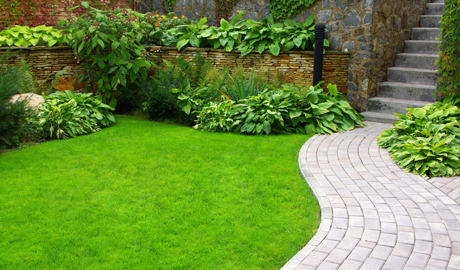DIY Early Spring Lawn Care Tips

Our garden coach shares her easy tips for fertilizing and lawn care in early spring.
When the snow is gone, rake your lawn. This will remove the old dead grass clippings and other debris left over from winter making room for new growth. After this harsh winter, many lawns will show damage that occurred under all that snow. Minor damage will generally fill in as the soil warms. If major damage occurred, you may need to over seed to fill in those areas. Just remember, if you decide to over seed, you will not be able to apply crabgrass preventer.
When your lawn begins growing, it’s time to get started on a feeding schedule. About every 6 to 8 weeks. This will usually amount to 4 feeding per season. It’s difficult to predict by the calendar when to start feeding. I like to use Mother Nature’s thermometer. When the forsythia are in full bloom, the soil temperature is warm enough for seeds to germinate. This is a great time to apply a fertilizer with crabgrass preventer to avoid that pesky crabgrass all season.
About 8 weeks later, follow up with another feeding. The best defense against weeds is feeding the lawn to develop deep roots and a thick lawn. If you already have weeds growing in your lawn, apply a fertilizer with broadleaf weed control.
